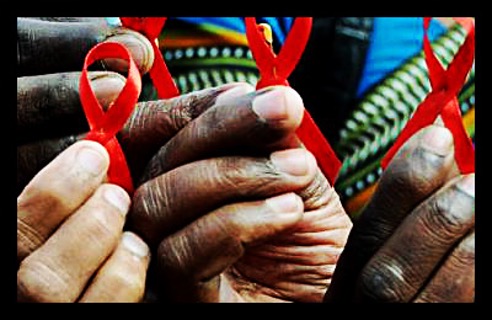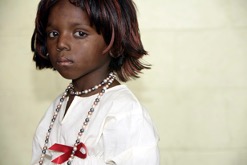How has COVID-19 and climate change affected the South African government’s ability to control the AIDS pandemic, given that 7.5 million people are living with HIV? Which demographics have been most negatively impacted?
HIV is a serious menace that has claimed the lives of 39 million people globally and, currently, there is no known treatment. The virus damages the immune system by targeting and eliminating a particular kind of white blood cell that aids in the defense against infections. This prevents the body from maintaining its health and successfully warding off infections, leaving the body with a weakened immune system. As of 2021, antiretroviral therapy remains a useful tool for controlling the virus and halting its spread from person to person. Nevertheless, the virus remains extremely hazardous and stigmatized worldwide. Since HIV is still a global problem, understanding how the virus is affected by climate change is crucial.

With more HIV cases than any other country in the world, South Africa continues to be the hub of the pandemic. As of 2019, there were 7.5 million HIV-positive individuals living in South Africa, with 200,000 new HIV infections and 72,000 AIDS-related deaths. HIV prevalence in South Africa has increased due to several social, economic, gender, and health-related variables, all exacerbated by the recent pandemic and the acceleration of climate change. High prevalence of teen pregnancies, interpersonal violence based on gender, high sex work rates, poor quality of schooling, pervasive poverty, and joblessness contribute to the challenges.
What impact does climate change have on HIV rates?
The implications of climate change are already being felt internationally and are projected to worsen, especially for those in vulnerable situations, according to the IPCC report published in August 2021. Various factors, including exposure, reliance on weather patterns for subsistence, and food shortages, influence susceptibility to climate change. Women, in particular, experience these impacts disproportionately. Natural disasters, socioeconomic issues, and security concerns push women—often responsible for raising children and families—to resort to risky means of temporary relief, making them more vulnerable to exploitation, human trafficking, and sex work, thereby increasing the risk of HIV infection.
What about teenage girls and women?
In South Africa, women are disproportionately impacted by HIV; as of 2017, 26% of women and 15% of males were believed to be living with the virus. Young women are almost four times as likely to have HIV compared to young men, with age identified as a defining risk factor due to intergenerational interactions between young women and elderly men, a population with a high HIV prevalence.

The erratic connections between sex work, HIV, and climate change
Several reports demonstrate a correlation between HIV rates and sex work. Sex work, HIV, and climate change are intrinsically related. A rise in global temperatures can impact food security, leading to an increase in individuals turning to sex work as a means of sustenance while being unable to afford effective contraception. HIV transmission rises as a result of climate change, particularly in the Global South, where women in extremely precarious situations seeking short-term assistance are susceptible to human trafficking and exploitation. The difference in HIV cases between men and women reflects the gender gap in sex work engagement, with women making up 53% of all HIV-positive individuals in 2020.
Food insecurity increases the risk of gender-based violence and contraception-free sex, putting women at greater risk. It also drives the desire for transactional sex in exchange for money or food. The effects of climate change, such as rising temperatures and increased rain, are directly connected to food poverty, placing millions of people at risk worldwide. Food insecurity and increased HIV transmission are related due to the growing necessity for sexual transactions in exchange for food as it becomes more expensive or scarce.
Battling the stigma attached to HIV
One of the main obstacles to the global fight against HIV and AIDS has been the stigma associated with being HIV positive. This stigma has impeded government intervention, stifled scientific inquiry, and sown the seeds of a discriminatory culture globally. Although the HIV stigma has lessened since the 1980s, measures must be taken to further reduce it. Systemic racism in the United States contributes to the ongoing HIV epidemic, with a Lancet study claiming that 43% of HIV-related deaths in 2018 occurred in Black communities. To change the trajectory of the epidemic, intentional efforts to increase access to care and prevention for underserved populations, such as those suffering from drug use disorders, are necessary.
HIV's prospects in South Africa
Life expectancy in South Africa has increased from 56 to 63 years, a remarkable achievement linked to the effectiveness of the nation’s HIV preventive strategies and antiretroviral therapy (ART) program. In 2020, 75% of individuals are receiving HIV therapy, and 92% of people are aware of their status. With the final round of cure trials beginning in 2021 and findings anticipated in April 2022, an HIV vaccine could potentially be on the horizon. Similar to the present COVID-19 vaccine access crisis, economic inequality may pose challenges to accessing vaccination even as the science behind the therapy appears promising. Worldwide vaccination access must be guaranteed by international governments if the HIV epidemic is to be controlled.

The HIV/AIDS Epidemic: The Reaction of Concern
Concern’s continuous HIV and AIDS work aims to support national government initiatives in host countries, mainstream and integrate responses into all sector programs, and lessen the impact of HIV and AIDS on individuals living in extreme poverty. HIV is a topic that all of our programs touch upon. HIV is a complex disease that calls for a response preventing new infections and lessening the effects on the world’s poorest people. Our teams, along with national partners, address HIV and AIDS in Bangladesh, Burundi, and Sudan through focused awareness campaigns, outreach programs, and HIV preventive education. Our HIV approach in Ethiopia is mainstreamed within the Emergency Nutrition response and incorporated into the Livelihoods Program. Concern Kenya and Sonke Gender Justice collaborate on the HIV response.
Both individuals living with HIV and those without it need change. HIV/AIDS has a severe effect on livelihoods, including discrimination at employment, and is most prevalent among the poorest households in communities. In the struggle to eradicate extreme poverty for everyone, those who are HIV positive are among those left behind the most. A baseline survey in Tonkolili District, Sierra Leone, conducted by Concern at the beginning of a project in February 2013, revealed that just 5.8% of men and 4.3% of women responded positively to persons living with HIV. Additionally, due in large part to a lack of anonymity at testing sites, only 5.3% of men and 5.8% of women had willingly tested for HIV. Although these statistics date back almost ten years, they reflect persistent views in areas where we work to ensure equity for individuals living with HIV and sufficient resources for men and women, particularly adolescents, to maintain their health and safety.
Conclusion
This comprehensive analysis sheds light on the intricate web of factors surrounding the AIDS epidemic in Africa. By understanding the historical context, prevalence patterns, socioeconomic repercussions, and healthcare initiatives, policymakers, healthcare professionals, and communities can work together to develop targeted interventions and support systems. By addressing the AIDS crisis holistically, Africa can move towards a future where the impact of the epidemic is mitigated, and affected individuals receive the care and support they need to lead healthy, fulfilling lives.
Written by – Sneha Jain
Edited by – Khalid Khursheed
